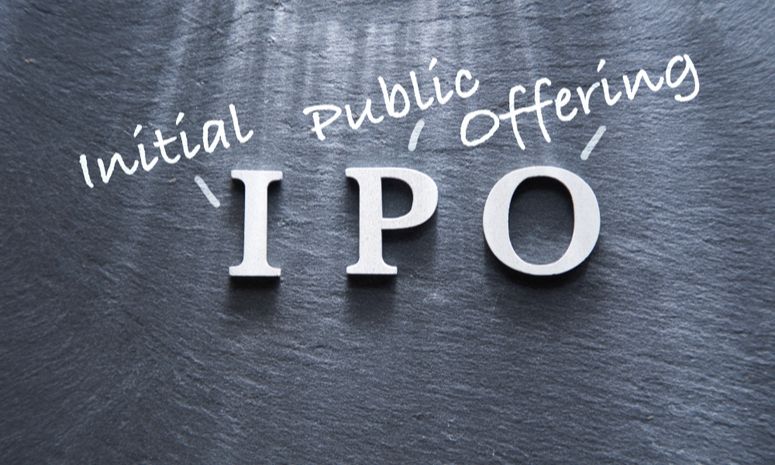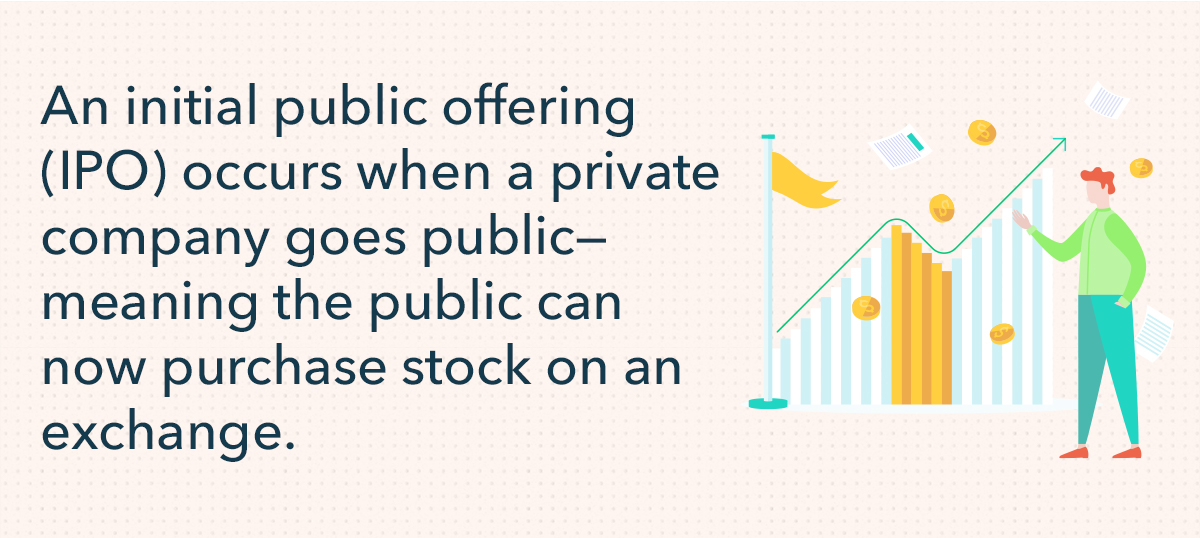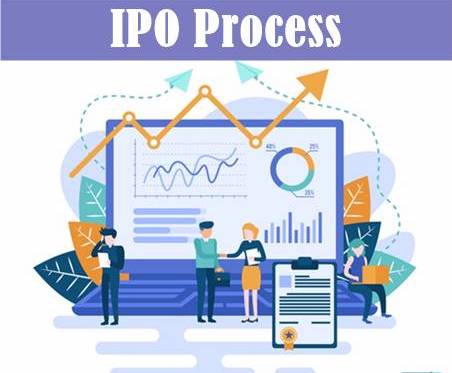What Is An Initial Public Offering (IPO) - The Complete Guide About IPOs

Going back in the history of Initial Public Offering (IPO), this word has been a buzzword among various investors and on Wall Street for decades. In fact, the first modern IPO was conducted by the Dutch, and they did it by offering shares of the Dutch East India Company to the general public. Since then various companies began to create IPOs to be used as a mode to raise capital from public investors through the issuance of public share ownership. Throughout these years, IPOs experienced uptrends and downtrends in issuance. Even the individual sectors experienced the same due to innovation and various other economic factors. For example, at the height of the dot-com boom, Tech IPOs multiplied tremendously as startups without remunerations rushed to list themselves on the stock market.
With the onset of the 2008 financial crisis, in that year least number of IPOs were seen, and after the recession following the 2008 financial crisis, IPOs came to a complete halt. Later on, for some years, although new listings were rare, now once again, it has become a boom. In this blog, Fintra will highlight the following topics:
- What Is an Initial Public Offering (IPO) and Its Purpose?
- How does an Initial Public Offering (IPO) Work
- The IPO Process
- The Advantages and Disadvantages of an IPO
- Performance of an IPO
What Is an Initial Public Offering (IPO) and Its Purpose?
Essentially an initial public offering (IPO) is a fundraising method used by large companies or private corporations. In this method, large companies or private corporations sell their shares to the public in a new stock issuance. Following an IPO, the company’s shares get traded on the stock exchanges.

IPOs enable companies to raise funds through the sale of their shares from public investors. The evolution from a private to a public company could be a vital period for private investors to realize gains from their investment as it generally includes a share premium for current private investors. Besides providing liquidity to company inventors and early investors, this process also enables public investors to participate in the offering and take advantage of a higher valuation.
How does an Initial Public Offering (IPO) Work
Before forming IPO, a firm is generally privately owned by its founders and/or by the ones who lent the funds for it to get started. A piece of the action in lieu of cash is given by the founders to the lenders and employees. This is done because the founders know in case the firm falters, giving away a portion of it won't cost them much. Moreover, if the firm succeeds and eventually goes public, everyone will win. Hence, the day before the IPO, the stock that was worth nothing will now hold some value. However, since their shares don't get traded on an open market, those private owners' stakes in the firm are hard to value. For example, speaking about the established firm IBM, those who own a share of it will promptly know its worth by simply taking a glance at the financial pages. Therefore, a privately held firm's value is mostly a guess as it's dependent on its assets, income, revenue, growth, etc. Since these are the similar criteria used for valuing a public firm, a soon-to-be-IPOed firm doesn't have any feedback in the form of a buyer who is willing to instantly purchase its shares at a particular price.
The process of IPO involves working with a private firm that reaches out to an investment bank who will then facilitate the IPO. The investment bank first values the firm via financial analysis before coming up with a valuation along with its share price, a date for the IPO, and a tremendous amount of other information. To ensure it meets all criteria, a business that desires an IPO has to register with the exchanges and the Securities and Exchange Commission (SEC). When all the required processes are completed, the company gets listed on a stock exchange, and its shares will be available for purchase and sale. This is one of the primary methods a business raises funds to fund its growth.

The IPO Process
An IPO consists of two parts: The pre-marketing phase of the offering, and the second is the initial public offering itself. When a firm is interested in an IPO, it will advertise to underwriters by requesting private bids, and/or making a public statement to generate interest. The underwriters, which are chosen by the company, lead the IPO process. A firm may select one or several underwriters to manage the various parts of the IPO process. These underwriters are involved in every facet of the IPO due diligence, document preparation, filing, marketing, and issuance.

Following are the steps to an IPO:
- Proposals: The underwriters display various proposals and valuations in which they discuss their services, the best type of security to issue, the offering price, quantity of shares, and the estimated time frame for the market offering.
- Underwriter: The firm selects its underwriters and formally agrees to underwrite the terms via an underwriting agreement.
- Team: The IPO teams are then formed that comprise underwriters, certified public accountants (CPAs), lawyers, and Securities and Exchange Commission (SEC) experts.
- Documentation: For required IPO documentation, information regarding the firm is compiled. The primary IPO filing document is the S-1 Registration Statement. This has two parts, the privately held filing information and prospectus. S-1 contains preliminary information about the expected date of the filing. The information will often be revised throughout the pre-IPO process, and also the included prospectus is will be revised continuously.
- Marketing & Updates: For pre-marketing of the new stock issuance, marketing materials get created. Then, the executives and underwriters market the share issuance to estimate demand and establish a final offering price. Throughout the marketing process, the underwriters are allowed to make revisions to their financial analysis. This can comprise the changing of the IPO price or issuance date as they see fit. Firms undertake the necessary steps to meet the requirements of the specific public share offering. They have to adhere to the exchange listing requirements along with the SEC requirements for public companies.
- Board & Processes: Now after everything has been done, a board of directors is formed to ensure processes for reporting auditable financial and accounting information is done every quarter.
- Shares Issued: Eventually, the firm issues its shares on an IPO date, and the capital from the primary issuance is received as cash to shareholders and is recorded as stockholders' equity on the balance sheet. Thereafter, the share value of the balance sheet tends to get dependent on the company’s stockholders' equity per share valuation thoroughly.
- Post IPO: Some post-IPO provisions may get instituted. After the initial public offering (IPO) date, underwriters may have a defined time frame to purchase an additional amount of shares. Meanwhile, certain investors might be subject to quiet periods.
The Advantages and Disadvantages of an IPO
Though the primary purpose of an IPO is raising capital for a business, they also have various advantages and disadvantages.
Advantages
One of the vital advantages of IPOs is that a firm gets access to investment from the whole investing public to raise capital. This facilitates easy investment deals along with share conversions and increases the firm’s exposure, prestige, and public image that can help the firm’s profits and sales. Increasing transparency by conducting the required quarterly reporting usually enables a firm to receive more favourable credit borrowing terms than a private firm.
Disadvantages
At times, firms might encounter several disadvantages by going public, and potentially choosing alternative strategies. Hence, the primary disadvantage of IPOs is the fact that they are expensive. Moreover, the costs of maintaining a public firm is an ongoing process and are usually unrelated to the other costs of doing business.
Fluctuations in share prices of a firm at times can be a distraction for the management that could be compensated and evaluated based on the stock performance instead of the real financial results. Moreover, since the firm has to disclose financial, accounting, tax, and other business information, during these disclosures, it may have to reveal publicly the secrets and business methods that can help its competitors.
Governance by the board of directors and rigid leadership can also make it harder to retain good managers who are willing to take risks. Staying private is always an option, and instead of going public, firms can also summon bids for a buyout. Additionally, there might be some alternatives that firms may explore.
Performance of an IPO
Several factors affect the return from an IPO that is being watched by investors closely constantly. Sometimes IPOs could be overly-hyped by the investment banks, and this leads to some initial losses. As IPOs get introduced to the public, most of them are known for gaining profits. A few vital considerations for IPO performance are to be considered:
Lock-Up Period
Following numerous IPOs, after observing the charts, one can notice that after a few months, a steep downturn in the stock occurs, and this is due to the expiration of the lock-up period. When a firm goes public, the underwriters create firm insiders like officials and employees, and they are required to sign a lock-up agreement. The legally binding contracts known as lock-up agreements are made and signed between the underwriters and insiders of the firm- it forbids them from selling any shares of stock for a specified period.
The lock-up period ranges from 3 to 24 months, and the minimum period is 90 days as stated under Rule 144 (SEC law). However, the lock-up specified by the underwriters may last much longer. One vital problem occurs when the lock-up period expires- as soon as the period expires, all the insiders are allowed to sell their stock. This results in a rush of individuals trying to sell their stock to discover their profit. Thus, this excess supply at times puts intense downward pressure on the stock price.
Waiting Periods
In their offering terms, some investment banks include waiting periods. Waiting periods put aside some shares for purchase after a specific period. Prices of these shares could increase if the allocation is bought by the underwriters and decrease if not bought by them.
Flipping
The practice of reselling an IPO stock to earn a quick profit in the first few days is known as flipping. Flipping is a common practice that occurs when the stock is discounted and soars on its first day of trading.
Tracking Stocks
Tracking stocks gets created when an existing firm spins off a portion of the business as its standalone entity. The main idea of doing spin-offs and creating tracking stocks is that sometimes, individual divisions of a firm can be more worthly than as a whole. For example, if a division is experiencing higher growth potential, but within an otherwise slowly growing company is having large current losses, it would be wiser to carve it out; keep the parent company as a large shareholder and allow it to raise additional capital from an IPO.
These can be interesting IPO opportunities from an investor’s perspective. This is so because when a spin-off of an existing company occurs, it provides investors with lots of information about the parent firm and its stake in the divesting firm. When more information becomes available for the potential investors it is usually better because then the smart investors are able to find good opportunities. Usually, spin-offs can undergo less initial volatility because investors have more awareness.
IPOs Over the Long-Term
IPOs are well known for having volatile opening day returns, which attract investors seeking to benefit from the discounts involved. Over the long term, prices of IPOs settles into a steady value and later on can be followed by traditional stock price metrics like moving averages. Investors who desire the IPO opportunity but don't wish to take the individual stock risk may glance into managed funds focused on IPO universes.

Conclusion
The late and legendary Benjamin Graham denounced IPOs as being neither for the faint of heart nor the inexperienced. They're meant for the seasoned investors, for those who invest for long periods, those who don't get swayed by fawning news stories and care more about a stock's fundamentals than its public image. Purchasing directly into an IPO can be a difficult process for common investors; but soon after an IPO, as the firm's shares get released for the general public, it gets easy to buy and sell them. Thus, Fintra advises before investing in IPOs, do proper research and once you do that, we are sure to see you becoming a billionaire!

